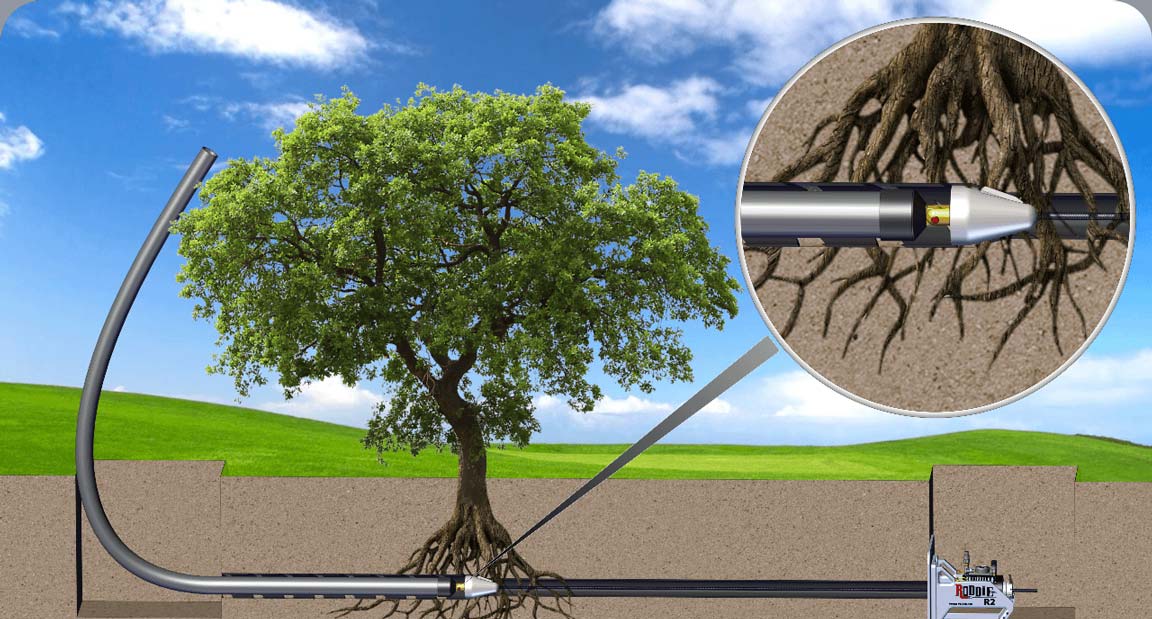



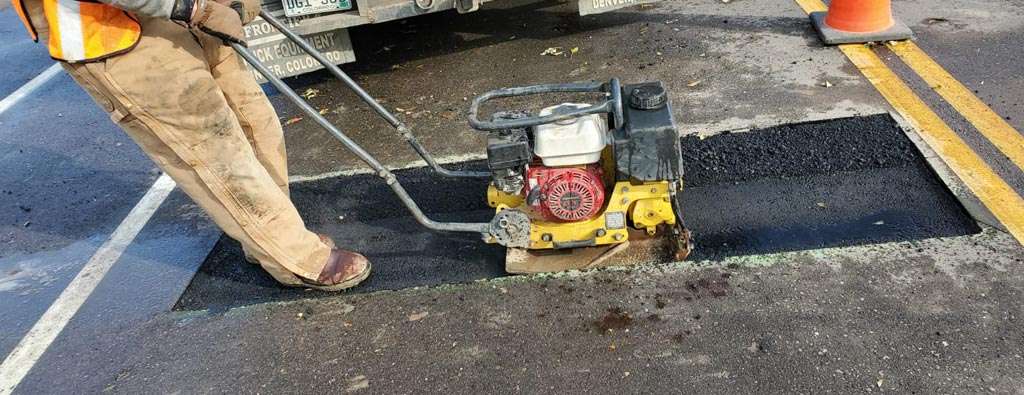
One of the most disruptive aspects of pipe bursting water line replacement, residential sewer pipe lining repair, emergency sewer line repair Denver CO, and replacement water pipe lines is the damage done to the landscape above the pipe. For instance, the older conventional sewer repair method was to dig a trench and ruin the whole area in order to show sewer lines are exposed. Now we are able to utilize the technologically advanced pneumatic pipe bursting system process. In other words, trenchless repair technology allows us to do sewer line bursting quickly. The obvious advantage of pipe burst sewer replacement method is not digging a trench. In this case, we no longer disrupt the above-ground environment. Additionally, we service and do emergency sewer line repairs around metro areas, Colorado cities such as Aurora, Lakewood, Thornton, Arvada, Westminster, Centennial and more.
Commercial trenchless sewer repair Denver CO has become a critical service for the region, offered by local company sewer experts. The unique challenges presented by retail systems require specialized expertise and resolutions tailored to meet the demands of large-scale operations. Denver’s saleable entities, ranging from retail spaces to large office buildings, rely on efficient plumbing systems for their daily functions. A disturbance can lead to significant losses, causing timely action essential. Denver sewer experts near me provide crucial support.
Leaking pipe repair in Denver CO is another service that demands immediate attention. Water leaks can cause extensive damage, including structural damage and mold growth, which can be costly to remediate. Specialized workers from sewer experts plumbing are equipped with the latest technology and techniques to quickly identify and fix leaks, minimizing damage and restoring normalcy to affected businesses and homes.
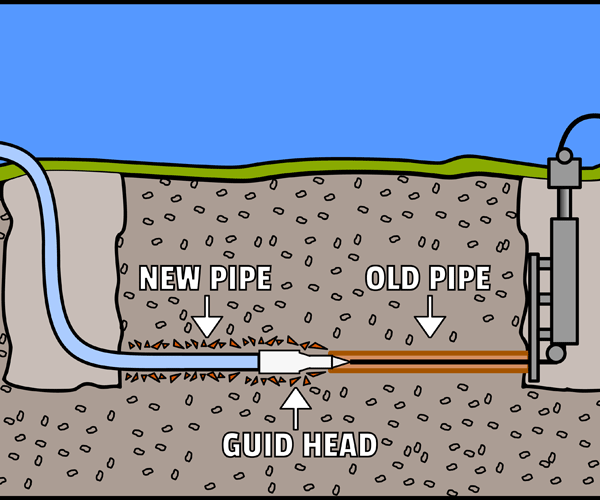
Sometimes you want to replace pipes not only because they are damaged, but also to expand the flow capacity. To clarify and the larger one takes its place.
In other words, for situations with burst sewer pipe in yard, we dig two small access holes for lateral pipe bursting sewer line repair. We need to destroy the existing pipe sewer support outward to make space for the bigger new pipe. Subsequently, a pointed pipe head breaks the old pipe into small pieces away from the new line’s location (insert T connector into existing pipe).
Lateral pipe bursting trenchless technology methods are extremely important for more than just removing broken sewer lines. In addition, it can add the sewage pass to a building that has seen an more of drain usage. For sewer drain cleaning Denver Colorado services get in touch!
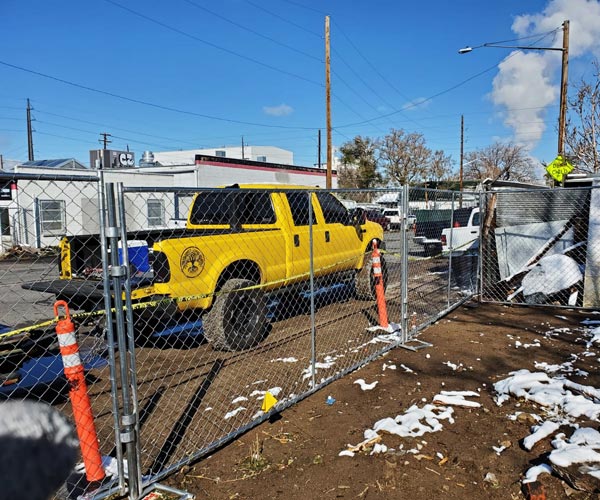
How does trenchless sewer repair work? In simple terms, sewer repair menthods like Denver trenchless bursting is done by digging two pits, shoving a cone-shaped head down inside and exploding the existing pipe away from the new main sewer lines. It requires complex tech in the pneumatic rupturing system which can also be hydraulic. Our crew would push the system through and out the receiving and launching pits.
Static rupture system work and no-dig pipe relining can only be done by licensed and experienced professionals like us. Above all, we have the appropriate equipment and training to complete these projects.
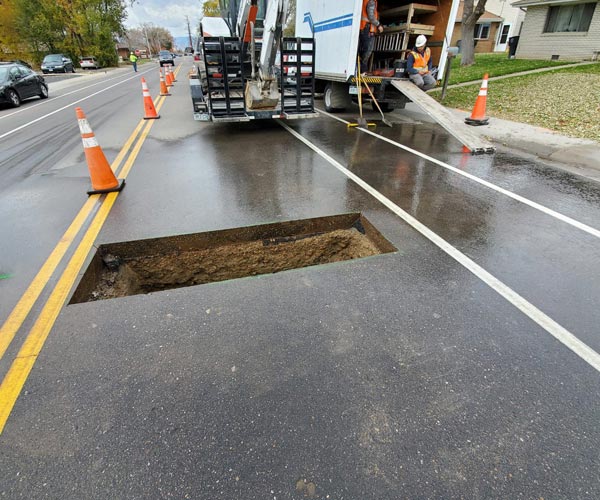
One of our top priorities on every project we do as best trenchless sewer repair contractors is minimizing our impact on your property. To do the sewer trenchless repair services successfully, you need to have experience with everything from tree root growth patterns to different geological properties of specific soil in certain regions and doing sewer line video inspection and water line services inspection. In other words, we have knowledge, professionalism, and equipment for trenchless sewer line replacement Denver. Fixed pipe bursting machinery ensures effective, easy, and inexpensive step with minimal eco harm.
Our water and sewer service specialists have been adopting this new modern non-invasive fracture proceedure as an alternative to the traditional ways of static pipe bursting systems repair solutions. Don’t risk having an amateur perform this complicated task. Our team provides trenchless sewer line repair, and express trenchless sewer line repairs — making rue that our water line services customer is happy and satisfied. In addition, as one of the best drainage companies like us, we will be happy to provide sewer pipe bursting cost at (720) 663-7473 in order to answer your queries on ‘how much a main drain pipe replacement cost?’ and ‘how much does it cost to replace sewer lines?’. To learn why you should choose static bursting, or trenchless sewer repair services, our customer service team are happy to answer all of your questions! What is more, we offer commercial grease trap and septic tank installation service. And when you find yourself asking ‘trenchless sewer repair near me’, don’t forget, our trenchless sewer pipe bursting contractors Denver cover all suburbs such as Highlands Ranch, Longmont, Broomfield, Castle Rock, Parker, Littleton, Brighton, Englewood, Wheat Ridge and nearby Colorado towns for affordable trenchless sewer repair.
One of the most effective approaches for updating old pipelines without extensive trenching is drain pipe bursting, a technique that has gained popularity for its efficiency and minimal disruption. Sewer line pipe bursting offers a solution, allowing for the changing of damaged sewer lines without significant impact on the surrounding environment. This method, known as pipe bursting sewer repair, has become a preferred choice among municipalities and homeowners alike, due to its cost-effectiveness compared to traditional sewer repair methods. Consequently, local services are increasingly recommending this less invasive alternative to open trench repairs. Homeowners curious about this method often inquire, “What is sewer pipe bursting?” It involves a specialized process where a new pipe is pulled through the old one, while a bursting head breaks the existing pipe outward, effectively replacing it without the need for extensive digging.
Leaky pipe repair Denver has emerged as a groundbreaking solution for homeowners and businesses alike. This innovative practice not only offers a less invasive approach to repairing pipes but also greatly reduces costs. Orthodox ways that require ample digging and landscape disturbance are becoming a thing of the past.
We specialize in this modern technique, ensuring that repairs are carried out efficiently and effectively. By choosing no-dig methods for brand new pipe installs, property owners can avoid the extensive deterioration to their yards and pavements that customary rehabilitations often entail. This is not only affordable but also time-saving, making it an increasingly popular choice among residents.
The appeal lies in its ability to address complex issues without the need for vast recess. From neighborhoods to bustling areas, the versatility of repair services ensures that all types of properties can benefit from this advanced method. Furthermore, the environmental impact is significantly reduced, as the process preserves natural landscapes and minimizes the carbon footprint associated with standard excavation work. As awareness and appreciation for this engineering grow, trenchless pipe repair Denver and trenchless technology piping installation and inspection continues to set the standard for efficient, effective, and eco-friendly plumbing excavation sewer lines solutions.
Trenchless sewer pipe repair and replacement offer a seamless emergency sewer repair services Denver, CO solution to one of the most daunting problems faced by property owners: sewage tube failures. Unlike the traditional methods that involve digging up large sections of the land, it allows for fixes and replacements to be made with minor disruption. This way is particularly beneficial for commercial pipe repair Denver CO, where business operations can continue without significant interruptions.
The strategy involves creating small access points to the damaged sections, through which the mend is conducted. This not only preserves the landscape but also reduces the overall repair time. Dig-free pipe lining, is where a new lining is inserted into the existing pipe, has proven to be a good way to extend the life of sewer lines without the need for extensive excavation sewer lines trenchless.
Repairing sewer lines and emergency water line repair using trenchless technology company have become the go-to proceedures for addressing issues. These practices not only ensure a quicker return to normalcy but also offer a more sustainable and environmentally friendly approach to sewer pipe bursting process. With the average cost trenchless pipe replacement being more favorable, it’s no surprise that more residents are opting for this innovative solution.
Sewer pipe bursting method or replace have evolved significantly with the advent of dig-free tech. This advancement has not only improved the efficiency of pipe repairs but has also offered a cheap, less disruptive alternative to property owners. As it continues to gain popularity, it is set to revolutionize the way we think about sewer repairs and replacements.
Underground pipe replacement methods have evolved significantly, offering more efficient and less disruptive options for addressing pipe failures. Classic old-school swapping often involved expansive digging, causing significant disruption to landscapes, traffic, and business operations. Today, cutting-edge technique allow to repair sewer line problems with minimal surface disruption, a boon for busy areas and residential neighborhoods alike.
Avenue new pipe line north system represent large-scale undertakings that require meticulous planning and execution. These projects often involve replacing old, deteriorated pipes with more durable materials to ensure the long-term reliability of the drainage system. The complexity of these projects necessitates the involvement of experienced professionals who can manage the process from start to finish, ensuring minimal impact on the surrounding area and its inhabitants.
The region’s commitment to maintaining its infrastructure is evident in the city’s approach to sewer maintenance. By employing advanced swap and repairing techiniques, it ensures that its commercial and residential areas remain well-served by essential utilities. The focus on minimizing disorder while delivering high-quality assistance reflects the city’s dedication to its residents and business community, pushing it as a model for other cities facing similar challenges.
Sewer video camera inspection services have transformed care, offering a glimpse into the hidden world of underground pipes. This allows experts to identify issues such as blockages, leaks, and wear without disruptive digging, streamlining the diagnostic process. It’s an essential tool for preemptive upkeep, catching small problems before they escalate into costly restorations.
Drain and sewer camera inspection further enhances the precision of evaluations. By providing clear visuals of the pipe’s interior, these inspections eliminate guesswork, allowing for targeted fixes. This way is invaluable for both residential and commerce properties, guaranteeing that systems are thoroughly checked with minimal intrusion. The accuracy and efficiency of camera inspections not only save time but also reduce overall maintenance costs, making it a preferred choice for proactive care.
These underscore the city’s commitment to maintaining robust and reliable waterwork infrastructures, ensuring the city’s homes and businesses run smoothly without the worry of unexpected plumbing failures.